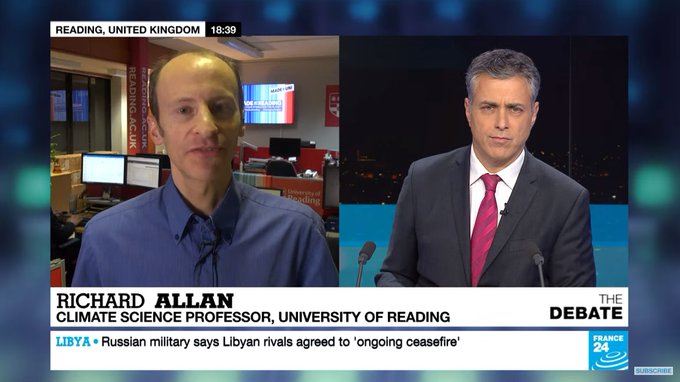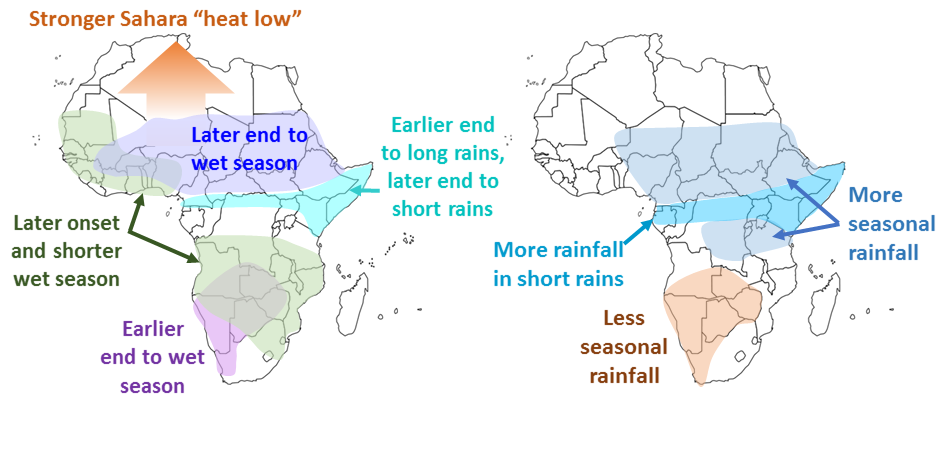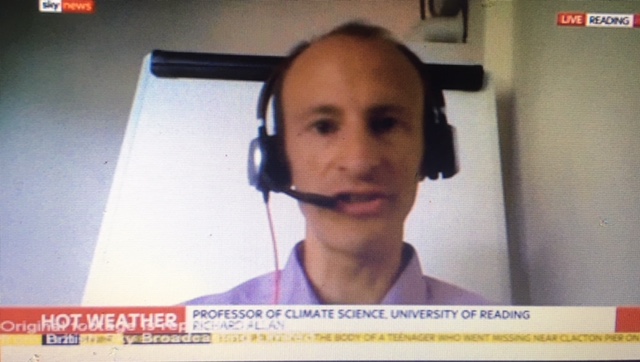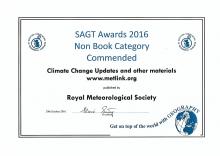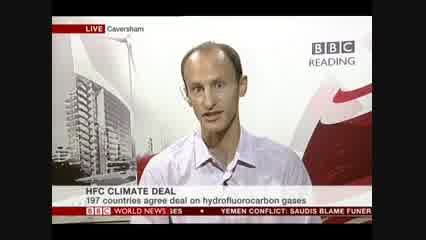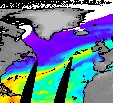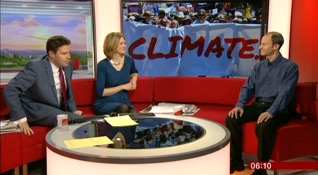Latest News - Richard P. Allan
Latest tweets (below)
Latest CO2 concentrations and growth rates
Tweets by @rpallanuk
Here is a list of some of my latest news.
23rd September 2025 - SMC reaction to Trump climate denial comments and CNN quote about the effects on climate change and human water use on drought emergence
17th September 2025 - on 2025 heat impacts over European cities and on environmental policies relating to Trump visit
1st Septemner 2025 - The UK experienced it's hottest summer on record (SMC, Daily Mail)
9th July 2025 - Comments on new attribution study and research on mortality of recent heatwaves (SMC1/SMC2, Washington Post, FT, CNN, Euronews, NBC)
25th June 2025 - Comments in New Scientist about new study suggesting simulations that generate smaller climate responses to rising greenhouse gases are less realistic
19th-30th June 2025 - Comments on UK heatwave (BBC| FT | Mail | SMC)
18th June 2025 - collabroation on Sony interactive Climate Station experience
3rd June 2025 - warmest spring in UK on record (Mail)
30th May 2025 - Comments on WMO report showing likelihood of 2025-2029 warming levels of 1.5oC
29th May 2025 - Comments about drought declared in northwest England (SMC, Guardian, Times, BBC)
28th May 2025 - Live Science article on irreversible shifts in rainfall patterns
May 2025 - Comments on persistance of global warmth into 2025 despite La Nina and on cloud feedbacks (New Scientist, Financial Times, Le Monde)
26th April 2025 - 2024 heat extremes discussed on CBS Quirks and Quarks
15th April 2025 - Contrasting extremes across Europe in 2024 outlined in Copernicus Report (press release, also LBC radio)
11th February 2025 - Earth's dirty mirror effect accelerating climate change: ERL paper (Press release, New Scientist, India Today)
6th March 2025 - Copernicus Report showing global warmth in February 2025 and record low total coverage of sea ice (Guardian, FT, SMC)
10th Feb 2025 - passing 1.5oC above pre-industrial is probably inevitable (SMC, CNN)-
5th Feb 2025 - record January 2025 temperatures despite La Nina (Conversation, New Scientist, FT, SMC, also SMC and FT comments on new Hansen et al. paper)
28th January 2025 - acceleration of climate change, new ERL paper (Press release, New Scientist, Guardian)
15th January 2025 - Comments on climate whiplash article (Guardian; full quote on LinkedIn)
10th January 2025 - Record global warmth in 2024 (Reading press release)

16th December 2024 - Record warmth of the past 2 years (AFP)
30th October 2024 - Severe flash flooding in Spain (SMC; WSJ; ITV; press release)
17th October 2024 - Global Commission on the Economics of Water report highlights imbalance in global water cycle (CNN)
15th October 2024 - comment on study failing to detect acceleration in global warming (SMC, Mail Online, Carbon Brief)
10th October 2024 - comments on Hurricane Milton (SMC)
16th September 2024 - catastrophic European flooding as Storm Boris stalled, funnelling copious moisture from the warm Black Sea into the mountains of central and eastern Europe (BBC Radio 4 PM, BBC article)
11th September 2024 - comments on effects of emerging La Niña on the UK (Sky)
5th September 2024 - comments on Copernicus bulletin showing summer 2024 was hottest on record globally (CNN)

7th August 2024 - comments on new research highlighting warming effect of high altitude aircraft contrails in Newsweek
18th June 2024 - I was runner up in the Public Engagement with Research awards
10th June 2024 - open letter urging UK political parties to be more ambitious on climate action
5th June 2024 - Copernicus Climate finds 12 months greater than 1.5oC above pre-industrial (CNN)
30th May 2024 - Comments on Yuan et al. paper quantifying effect of shipping fuel regumations on current climate change (SMC, Telegraph, Forbes)
7th May 2024 - I was shortlisted for the University of Reading Research Awards 2024 for "Communicating climate research to inspire positive action"
22nd April 2024 - State of the European Climate 2023 (SMC, Euro News)
18th April 2024 - Comment on El Niño and climate change in The Context
17th April 2024 - comments to BBC on why extreme rainfall and flooding in Dubai were not related to cloud seeding but are consistent with the intensification of precipitation in a warming climate (full quote; see also expert comment from Prof. Maarten Ambaum)
11th April 2024 - New research in Nature Geoscience suggests aerosol particle pollution may have increased cloud and offset global warming more than expected based on analysis of volcanic plume from Hawaii (press release)

19th March 2024 - WMO state of the climate in 2023 report (SMC, FT, LBC)
7th March 2024 - record February warmth in the Copernicus data (SMC, Al Jazeera, Express & Star, University of Reading)
19th February - comments on dying El Niño in The Mirror
14th February 2024 - comments on new Nature paper on Amazon tipping point (CNN and elsewhere)
8th February 2024 - First time 12 months have been more than 1.5oC above pre-industrial levels based on Copernicus data (press release, also Radio Berks, LBC)
5th February 2024 - SMC comment on new sponge skeletal record suggesting a surprising early industrial warming (also Newsweek)
19th January 2024 - SMC comments on study highlighting cost to economies of sea level rise
15th December 2023 - Coverage of the UAE COP28 outcome (SMC; Forbes; BBC live coverage; Pharmaceutical Technology)
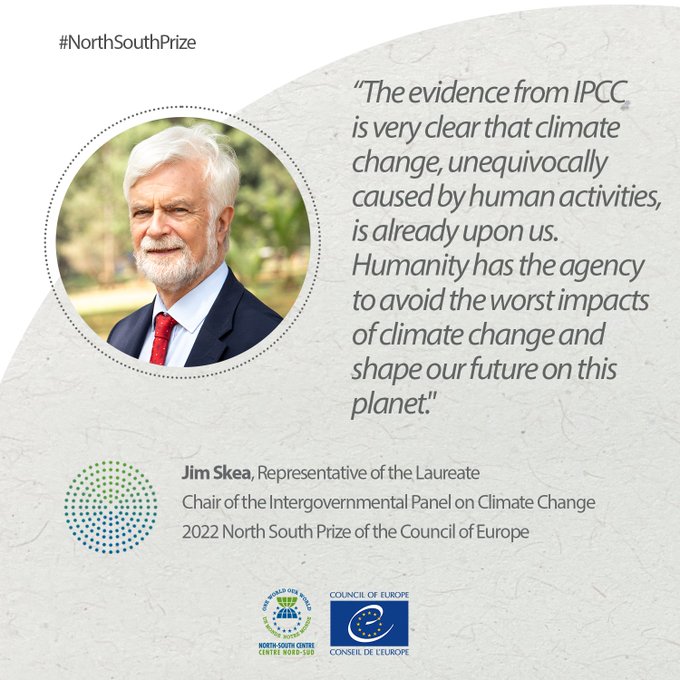
14th December 2023 - IPCC recipient of Council of Europe 2022 North South Prize
17th November 2023 was the first modern day to breach 2 degrees Celsius above pre-industrial temperature (CNN)
14th November 2023 - what happens when we reach net zero? SMC comment on new paper assessing implications of zero emissions commitment
8th November 2023 - Record October warmth means 2023 certain to be warmest year in the observational record (SMC; Guardian; University release; Arab News)
5th September 2023 - Comments about record September 2023 global temperatures on iNews and The Times (see also University of Reading press release)
4th September 2023 - France24 interview on the link between climate change and extreme weather events in 2023 including the recent flooding that affected Spain and the Burning Man festival in the USA
27th July 2023 - new research published in Environmental Research Letters shows greater range between wet and dry periods as Earth warms (Physics.org, NCEO blog, Research Reading Blog)
25th July 2023 - comments to CNN on rapid attribution of 2023 heatwaves to human caused climate change (also BBC News Channel "The Context")
15th July 2023 - Interview with Al Jazeera on heatwaves (also SMC, Daily Mail, inews, Int. Business Times plus also Tom Clarke at Sky and TRT World)
11th July 2023 - comments on Japan flooding (CNN and elsewhere)
10th July 2023 - Emerging climate change over Europe in work led by Albert Osso and Philip Criag as a last contribution from the INDECIS project published in Int. J. Climatology showing simulations that are too cool tend to warm faster and those with wetter soils dry more
8th July 2023 - interview on BBC Radio 5 Live Breakfast Show on hottest day globally in recorded history (also BBC Radio Foyle and BBC Radio Ulster)
19th June 2023 - Comments on State of European Climate 2022 report in SMC
8th June 2023 - El Niño is declared: interviews on BBC World Service and Radio 4 (also Financial Times, Telegraph and France24)
18th May 2023 - comment on effect of developing El Nino and the chances of breaching 1.5oC abover pre-industrial global surface temperature in the next five years (An inevitable climate breach?)

20th April 2023 - Copernicus State of the European Climate 2022 (New Scientist; Nutrition Insights; France24; SMC)
17th April 2023 - Latest assessment of Earth's heat budget led by Karina von Shuckmann published in ESSD (see also NCEO blog)
20th March 2023 - Release of the Intergovernmental Panel on Climate Change Synthesis Report with comments at SMC and Guardian
28th January 2023 - Comment on CNN article highlighting new review on deterioration of existing, uncleared forest in the Amazon
5th January 2023 - Guardian and SMC quote on Met Office story on record UK temperatures in 2022 (see also CNN article)
20th December 2022 - BBC quote on Met Office forecast of renewed warming in 2023
14th December 2022 - Quoted in New Scientist article on drought and Europe's energy system
7th December 2022 - Interview on the science behind human-caused climate change and net zero as part of the Electric Evolution podcast series
22nd November 2022 - Reading Climate Fayre helping local organisations address the impact of climate change
7 November 2022 - Guardian article on rapidly emerging climate impacts ahead of COP27
2 November 2022 - SMC quote on Copernicus Climate report showing rapid warming in Europe
31st October 2022 - Where is the heat going during La Nina? NOAA climate.gov blog
16th October 2022 - worsening floods & droughts with every bit of global warming (Scotsman, also research.reading blog)
13th October - IPCC joint winner of Gulbenkian prize for humanity (certificate)
9th Aug 2022 - developing drought in the UK (SMC; see also University of Reading research news) quoted by ITV
News (online), Independent, Daily
Mail, Evening
Standard, Aol., The
National News, Yahoo!,
Western Mail (in print), Oxford
Mail, Daily
Echo, The
National, Belfast
Telegraph, The
Bolton News, The
Standard, News
and Star, The
Press, Glasgow
Times, News
Break Sky
News
online, Express, Daily
Mail, Yahoo!, Heart
Radio
online, Smooth
Radio
online, Capital
FM Radio
online, MSN, The
Washington Times, News
Amed, Daily
Star Post, The
One World News, Eminetra,
Arab News 24 and more than a hundred other outlets on the impact of
climate change on the intensity of droughts.
11th July 2022 - heatwave in the UK and western/southern Europe (SMC, ABC radio news, Yahoo UK, Guardian, Times, i-news, Mail, CNBC, BBC News) 19th May 2022 - Science Media Centre comments on WMO State of the Global Climate 2021 report (Irish Times) 16th May 2022 - Two new studies on drought across Europe (Water Resources Research) and in the Nile Basin (Scientific Reports) 7th March 2022 - SMC comments on Amazon tipping points paper (see also CNN article) 4th March 2022 - Comments on storms and climate change in Bloomberg Westminster report
18th February 2022 - SMC comments and New Statesman article on Storm Eunice and climate change (also ITV news, Guardian, LBC, etc) 16th February 2022 - France 24 interview on climate change and energy policy 10th January 2022 - SMC comment on Copernicus report of ongoing global warming highlighting impacts in 2021 and surging methane concentrations 1st December 2021 - comment on research showing a faster increase in precipitation and transition from snow to rain in the Arctic (SMC, Guardian) 14th November 2021 - Outcome of the COP26 climate meeting (SMC; earlier articles in Guardian and Daily Mirror) 1st November 2021: RMetS video on How and why the climate is changing to showcase the new RMetS book Weather - a force of nature 4th October 2021: University of Reading podcast Climate Change: Providing the Science for Politicians 9th September 2021 - Longer dry spells and later wet seasons projected for tropical regions (research in J. HydroMet. and press release; see also SA Business Insider)
1st September 2021 - interview with BBC Scotland about WMO report on weather-related disasters since the 1970s and link to climate change (also Al Jazeera Inside Story) 9th August 2021 - Intergovernmental Panel on Climate Change 6th assessment report on the physical science basis released (as an author I also contributed to the SMC briefing, BBC 5Live, BBC World Service, Guardian, Al Jazeera/Inside Story, Washington Post, ITV,
etc...) 29th July 2021 - State of the UK Climate report (Science Media Centre, Sky News, Guardian) 21st July 2021 - extreme rainfall and flooding over Europe and the challenge of simulating fine detail impacts (CNN, GB news, SMC & The Times) 5th July 2021 - Comments on North American heatwave - Science Media Centre 27th May 2021 - SMC quote on Met Office Met Office predictions the planet may cross 1.5oC warming threshold in one of the next 5 years (also interviewd on BBC World News and News 24) 30th April 2021 - interview will NOVA radio on new government emissions cut targets and the recent UN report on the state of the climate 19th April 2021 - comments on WMO state of the climate report to SMC, Guardian and Independent April 2021 - interviewd by BBC Weather World on extreme precipitation 9th September 2020 - contribution to Physics World article asking: Has the COVID-19 lockdown changed Earth’s climate? 20th August 2020 - Independent article reports lowest expected wheat yields in 40 years 12th August 2020 - State of the climate 2019 and comment at SMC 31st July 2020 - Comments on State of UK climate report in Independent and SMC 9th July 2020 - Comments on climate mitigation to Wall Street Journal and Science Media Centre 8th July 2020 - New paper led by Matthew Menary on changes in the Atlantic ocean circulation published by Geophysical Research Letters
October 29th 2016: Our Educational material for schools on climate change developed by RMetS, RGS and NCAS Climate was commended at the Scottish Association of Geography Teachers awards
October 15th 2016 - BBC World interview about the recent deal to phase out potent HFC greenhouse gases


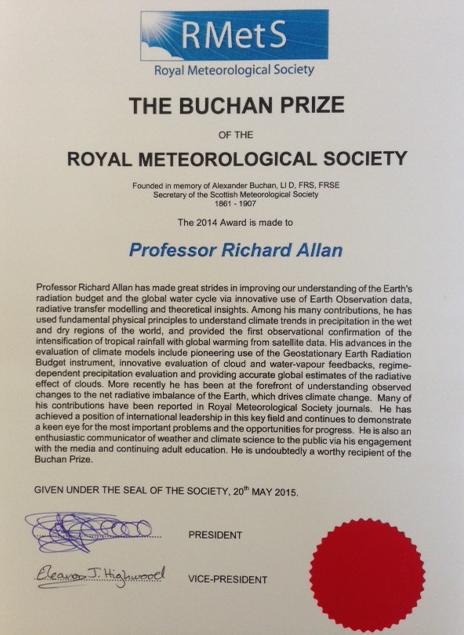
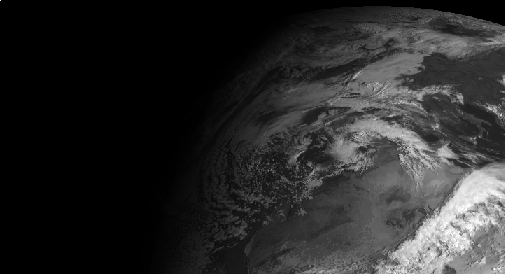

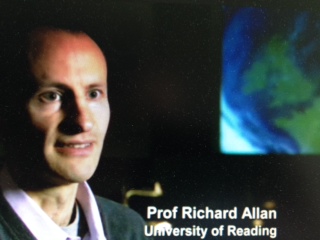
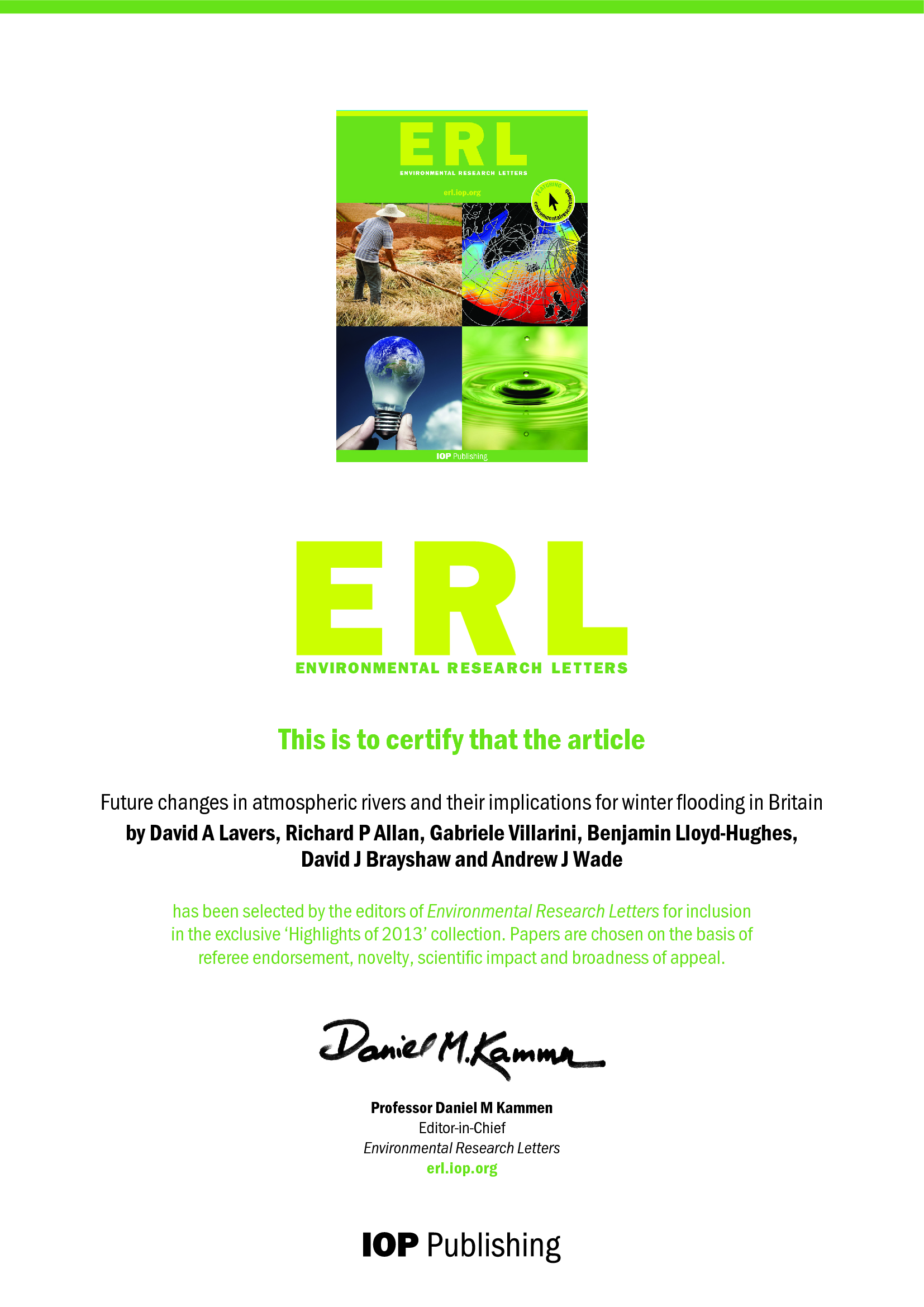

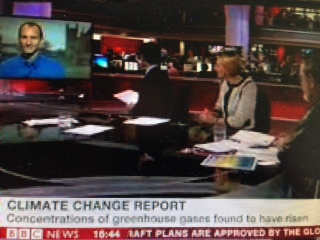
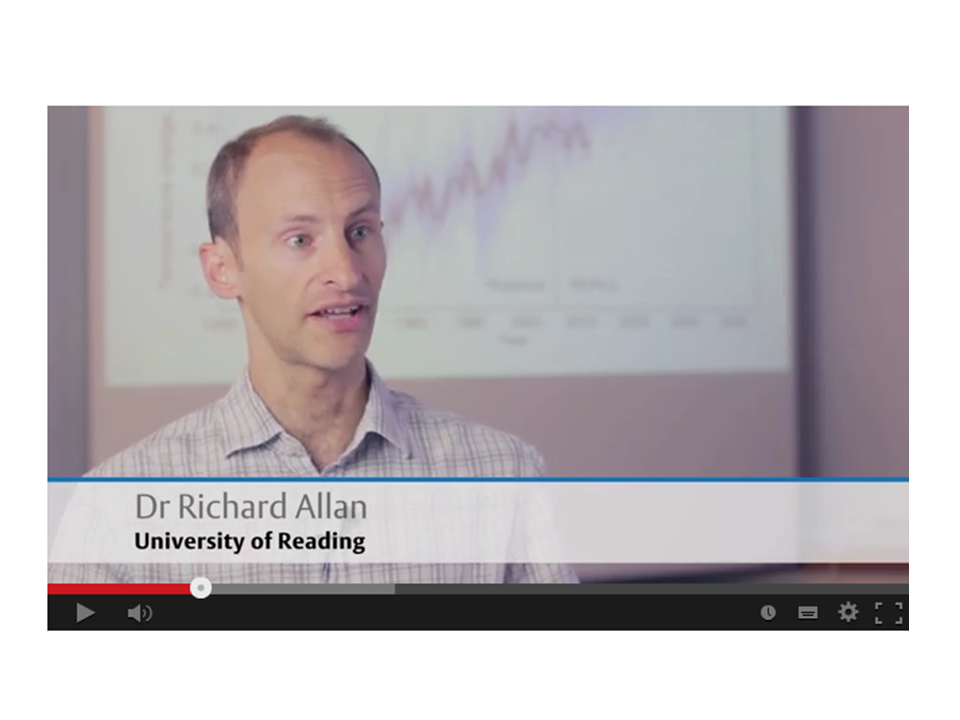


Return to top
Return to top
Older News
October 2011:
University of Reading joins International Space Innovation Centre
Complex mathematical representations of Earth's atmosphere, oceans and land are required to make realistic predictions of future weather and climate. Satellite data is becoming increasingly important in evaluating and improving the physical representation of simulations of planet Earth that are made by these detailed computer models. For example, since 2003, Met Office weather forecast model simulations have been routinely scrutinised through comparisons with GERB satellite measurements of the Earth's radiative energy balance. Detailed analysis has been undertaken to understand and improve the simulation of cloud processes, examining the radiative properties of cirrus cloud from aircraft condensation trails and identifying the the greenhouse effect of desert dust.
As part of the commitment to the exploitation of satellite data in monitoring and measuring the workings of planet Earth's environment, the University of Reading has joined ISIC. Read more...
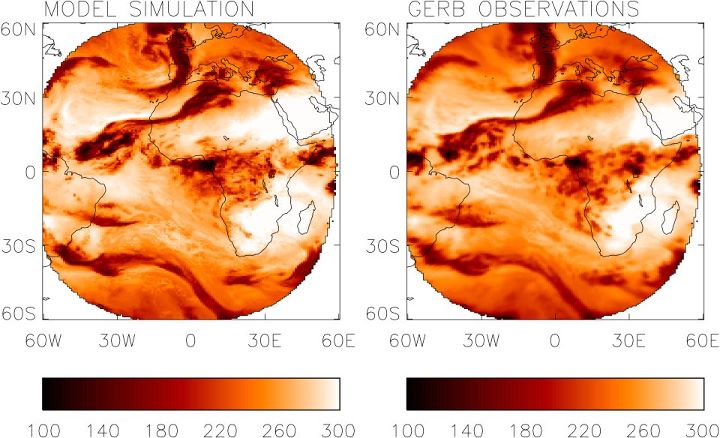 Above: Radiative energy (units: Wm-2) emanating from planet Earth at 6am GMT on Monday 24 October 2011 as simulated by the Met Office global forecast model and the Geostationary Earth Radiation Budget (GERB) satellite instrument.
Above: Radiative energy (units: Wm-2) emanating from planet Earth at 6am GMT on Monday 24 October 2011 as simulated by the Met Office global forecast model and the Geostationary Earth Radiation Budget (GERB) satellite instrument.
Dark regions in the image denote high altitude cloud, with cold tops that only weakly emit thermal infra-red (or longwave) radiative energy out to space. Relatively cloud-free, hot regions, such as Saudi Arabia in the image, emit strongly in the longwave part of the electromagnetic spectrum and appear light in the image above. This image was produced as part of the joint University of Reading and Met Office SINERGEE project (see article describing method), funded by the Natural Environment Research Council.
Return to top
September 2011:
Intensified flows of moisture into the tropical rainy belt
Moisture is the fuel for tropical storms. Since they typically rain out in a day more water than is contained in the column of atmosphere, rain storms rely on a convergence of water vapour from surrounding regions. As part of the Natural Environment Research Council PREPARE project, work lead by project scientist, Matthias Zahn, has indicated an intensification of the inflow of moisture at low levels and outflow higher up in the tropical atmosphere over the last 2 decades (see Figure which depicts changes in moisture inflow into the tropical wet regions 1989-2008). 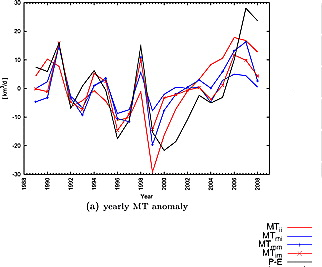
We found that detailed calculations every 6 hours were required to accurately follow the flows of moisture and our results have implications for the tropical water cycle and the intensity of rainfall. Further work is required to understand the changes in tropical circulation and its implications for changes in precipitation patterns. This work was published in the Journal of Geophysical Research.
Return to top
Changes in Earth's radiative energy balance 1985-2010
In an article published in Meteorological Applications I put together the latest estimates of changes in the amount of energy entering the top of Earth's atmosphere. This comprises incoming sunlight, the outgoing reflected sunlight and the outgoing thermal emission of longwave radiation. The diagram below shows how this net flux changes from month to month (after removing the normal seasonal changes) based on satellite data (ERBS and CERES) and from reanalysis data which combines weather forecast models with observations:
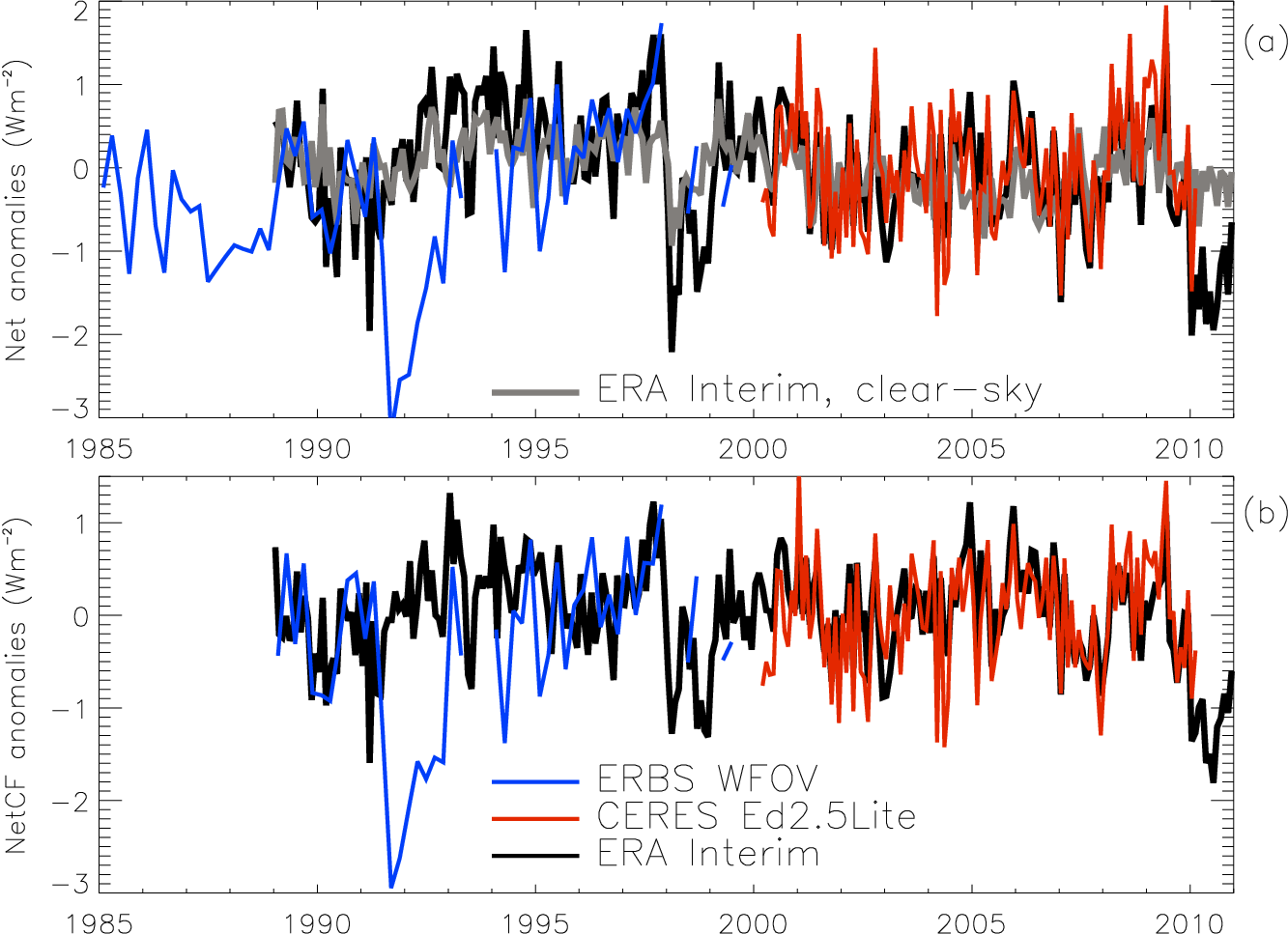 Estimates of near-global changes in (a) the net flux of energy into the top of the atmosphere (Net) and (b) the cloud radiative effect (NetCF) on this energy balance calculated by removing the simulated clear-sky fluxes (both in Watts per metre squared) since 1985 (the region considered is 60oS-60oN).
Estimates of near-global changes in (a) the net flux of energy into the top of the atmosphere (Net) and (b) the cloud radiative effect (NetCF) on this energy balance calculated by removing the simulated clear-sky fluxes (both in Watts per metre squared) since 1985 (the region considered is 60oS-60oN).
The warm El Niño years of 1998 and 2010 are characterised by negative departures from the norm. This is a result of natural shifts in the distributions of water vapour, cloud and surface temperature. Also prominent is a drop in net flux following the Pinatubo volcanic eruption in 1991 visible in the ERBS satellite data. Reflective particles called aerosol entering the stratosphere following the eruption increased the reflectivity of the planet (this is not seen in the reanalysis model since the volcano was not included and so the NetCF shows the influence of aerosol and cloud on the radiation balance; climate models can actually capture volcanic induced changes in the energy budget quite well).
Future work is endeavouring to understanding in more detail the bumps and dips in this graph which may tell us more about how the climate responds to small yet persistent radiative imbalances that determine whether our climate warms of cools. At present, human influences on the atmosphere have caused the Earth to receive more energy each year than it loses to space, resulting in a heating of the oceans.
Return to top
Return to top
Blog posts/other
See also Department of Meteorology Blogs
Return to top
Richard P. Allan Location: Department of Meteorology (2U15)


